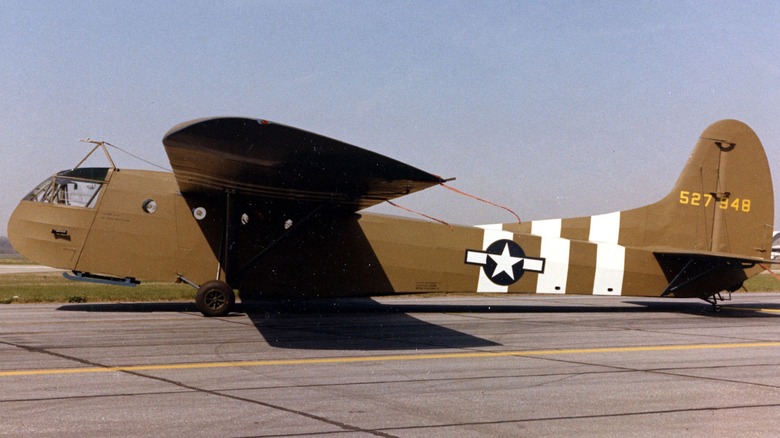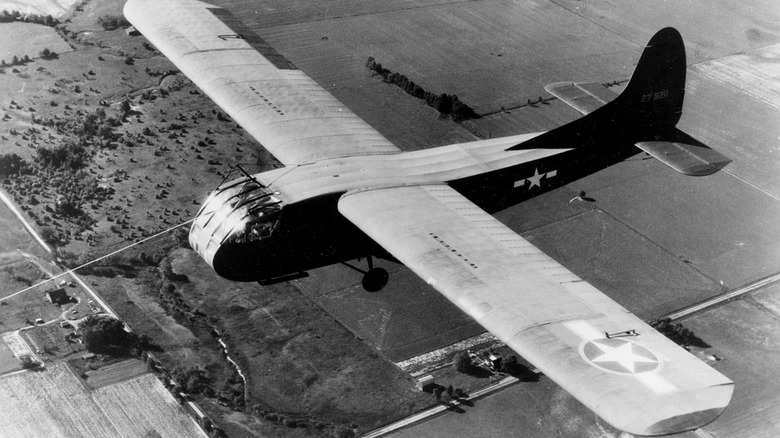Why Were Planes Towed By Other Planes In WW2?
These days, if you want to insert combat troops into a specific area, you have several options. Helicopters are an obvious choice, as is the CV-22 Osprey, which is a combination of a plane and helicopter. Back in World War II, however, things were different. For one, helicopters were a burgeoning technology. While airborne troops were fighting throughout the conflict, hitting a specific drop zone was challenging. The best option was a glider, and they were used in great numbers in engagements like Operation Market Garden and Operation Overlord.
U.S. Army gliders were important in World War II, functioning effectively as stealth planes. With no engine, gliders would be towed by other aircraft before being released to slip silently past enemy defenses. They were first used by Germany during a surprise attack on Fort Ében-Émael in Belgium on May 10, 1940. A small contingent of German troops infiltrated the fort by quietly landing gliders inside the defensive perimeter. Within only 20 minutes, the Germans took the fort. Meanwhile, another assault led by gliders assaulted three key bridges, enabling Germany to invade Belgium and France.
The Allies paid attention to this new strategy, and it wasn't long before several nations had their own fleets. These aircraft were effective, but they were also dangerous. Gliders lacked any weapons for defense, and nobody wore parachutes, meaning they had no second chances if things went awry. Unfortunately, this was often the case.
The Douglas C-47 Skytrain primarily towed the CG-4A Hadrian
While there were many models of gliders, the U.S. Army Air Forces employed the Waco CG-4A Hadrian, which was built by 16 contracting agencies. By the end of the war, those companies produced 13,909 CG-4As. The transport aircraft, the Douglas C-47 Skytrain, typically towed them at a maximum speed of 150 mph. Although the gliders were designed to be reused and had landing gear, many were lost in combat after crashing.
CG-4As were made of fabric-covered wood with some metal elements. Flown by a pilot and a co-pilot, they were also outfitted to carry several types of configurations. The gliders had 13 seats for fully loaded troops. They could also carry a jeep and four personnel, or a 75mm howitzer with 18 rounds of ammo and three personnel. Empty, they weighed 3,900 pounds, but could support as much as 9,000 pounds. For towing, they used a 350-foot nylon cable. The CG-4A was relatively large, with a wingspan just over 83 feet, and it measured nearly 50 feet in length. At roughly 15 feet tall, it could easily sneak behind enemy lines — with, of course, the assist from its towing aircraft.

